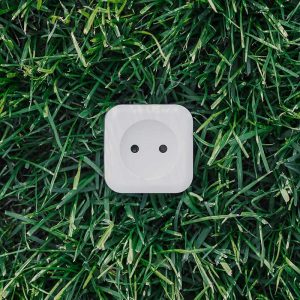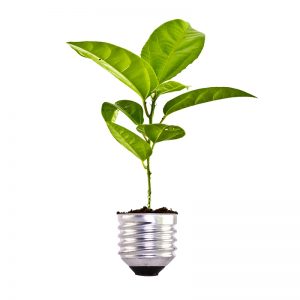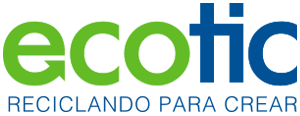
Carles M. Gasol | Co-founder and Business Development Manager inèdit

Gabriela Benveniste | Project Manager inèdit
“Ecodesign considers all the stages that take place from the conception of the device to its final operation and, incorporating the environmental variable as a requirement, can contribute to aligning business, environmental and consumer interests”
The lifecycle of an electrical and electronic appliance (EEE) is defined by its design and purpose, and involves stages such as the extraction of raw materials and their transport, the EEE manufacturing processes, the various logistics and distribution operations, the consumption of energy and resources during the use of the product, and finally, the product and the management of waste electrical and electronic equipment (WEEE).
Ecodesign applies life-cycle approach, which consists of considering all the stages that follow each other from the conception of the EEE to its management at the end-of-life, in order to detect whether a solution in one stage will have a positive impact on the total balance of resource and energy consumption and emissions generation, or whether it will only mean transferring the problem to another stage.

From the point of view of the circular economy, one of the main goals of a life-cycle approach is to establish ecodesign strategies for extending the lifetime of products through reuse or reparability of EEE and, in the end, to close cycles by revaluing WEEE, through recycling and material recovery of the most precious EEE components, normally some metals.
Some Member States are pushing for developing ecodesing legislative measures for reparability and durability, considered to be the two main strategies that need to be boosted in the sector.
In France, following the publication of Law 2010-105 on the fight against waste and the Circular Economy, specifically in its article 16, they mention: “producers, importers, distributors or other marketers of electrical and electronic equipment shall communicate, free of charge, to the retailers of their products and to any person requesting it, the reparability index of the equipment, as well as the parameters used to establish it; such index is intended to inform the consumer about the ability to repair the product in question”.
Furthermore, from 1st January 2024, producers or importers of certain products shall communicate to sellers and anyone else who requests it, free of charge, the durability index of these products and the parameters used to establish it; such index includes new criteria such as the reliability and robustness of the product.
It is estimated that extending the lifespan of EEE can have a beneficial impact on saving greenhouse gas (GHG) emissions. For example, extending the lifespan of a TV from 1 to 3 years can reduce CO2 equivalent by 41-124 kg according to the ADEME [1] research.
In Spain, both the preliminary draft of the Spanish Waste Law and the recent Circular Economy Strategy have also focused on the durability of EEE, recommending an increase in their potential for repair, reuse and servicing. However, neither the draft bill nor the strategy go into detail on the regulatory measures or tools to promote such ecodesign and circularity strategies.
Ecodesign is defined as the technical, creative and multidisciplinary process for the development of EEE:
- feasible, technically industrialisable and financially profitable EEE,
- desirable, for both clients and consumers,
- and sustainable, with optimal resource consumption, energy consumption in its use stage, recyclable in its final stage of life and with low contribution to the generation of emissions during its entire lifecycle.

The main novelty of ecodesign with respect to traditional EEE design is that, from a holistic and systemic viewpoint, qualitative and quantitative tools (such as Lifecycle Analysis – LCA) and methods for better management of the resources associated with the lifecycle of EEE are applied.
In addition to being beneficial for the environment (reduction of the consumption of materials, energy, water, waste and spillage), the ecodesign methodology means great opportunities for the company:
Reputation enhancement
Threats, derived from inadequate sustainability management, which could affect the image of the organisation are minimised; brand values are reinforced, achieving a favourable market positioning.
Better risk management
The company’s exposure to market volatility and the increase in prices of raw materials and energy is reduced; the impact of the reformulation of costs associated with emissions or waste management is also minimised.
Increased eco-efficiency
Thanks to the more efficient consumption of resources and less generation of emissions, costs are reduced, achieving the same or better results.
Fostering innovation
The introduction of sustainability as a “new” design requirement promotes both the idea of new design solutions for EEE and research and development of the best possible techniques.
Increasing the overall value of the product
Sustainability is incorporated as a real sales argument, increasing the attractiveness of the product and its differentiation. It helps to increase employee and consumer confidence.
Improving the relationship with third parties
Favours the conditions of access to capital, whether new clients or investors, as well as meeting and anticipating environmental requirements.
Consumer legislative pressure or the need to gain efficiency must be alleviated with proactivity and methodologies. Ecodesign (design that incorporates the environmental variable as a requirement) can help to align business, environmental and consumer interests.
More information on inèdit can be found at www.ineditinnova.com
[1] Evaluation environnementale et économique de l’allongement de la durée d’usage de biens d’équipements électriques et électroniques à l’échelle d’un foyer. Autores: MICHEL Frédéric, DULBECCO José Rafael, LHOTELLIER Johan. avril 2020 – 27 p. Available at: link.


